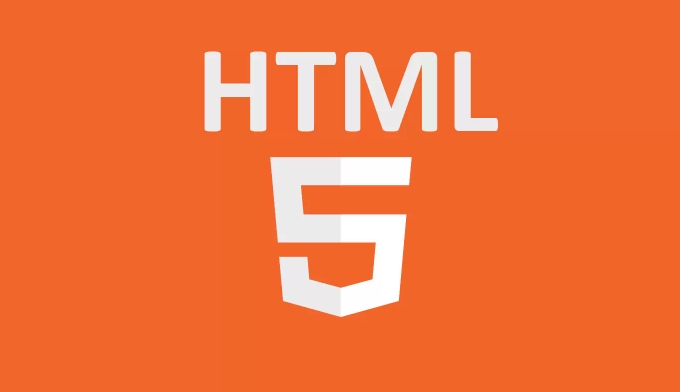Creating Reusable Content Structures with HTML5 Template Tag
Jul 06, 2025 am 01:39 AMThe HTML5 tag is used to create a reusable lazy content structure. The specific steps are: 1. Define the template; 2. Obtain and clone the template content through JavaScript; 3. Insert the clone content into the page. Its features include default invisible, support for any HTML, and require JS operations. It is suitable for scenarios such as component structure, dynamic loading, and preloading resources. The scripts and styles in the template need to be specially processed and cannot be nested in specific tags.

Creating a reusable content structure using the HTML5 <template></template> tag is actually a very practical trick. It is not a show-off, but helps you save some HTML content that you don't want to render immediately but may use in the future, and take it out and use it when needed.

What is the <template></template> tag?
<template></template> is a tag introduced in HTML5, specifically used to store "lazy" content. That is to say, the browser will not render the content inside the page when it is loaded, but it can be taken out and reused by JavaScript.

Its characteristics are several:
- The content inside is invisible by default
- You can put any HTML, including
<script></script>and<style></style> - Must be accessed through JS to clone
For example, if you have a comment box structure or a dynamic pop-up window, you can first write it in <template></template> and then insert it into the page when the user clicks the button.

How to create reusable content using <template></template> ?
The basic usage process is: define the template → obtain the template content → insert the page.
Let's give a simple example:
<template id="user-card">
<div class="card">
<h3>Username</h3>
<p>This is the user's profile information</p>
</div>
</template>
<script>
const template = document.getElementById('user-card');
const clone = document.importNode(template.content, true);
document.body.appendChild(clone);
</script>What the above code does is very clear:
- Find template elements
- clone its contents (the second parameter
truemeans deep cloning) - Add the cloned content to the page
This method is clearer and easier to maintain than direct spelling strings.
What are the practical application scenarios?
Several common uses include:
- Component structure : such as cards, list items, button groups, and parts that can be reused on multiple pages
- Dynamic loading of content : For example, click the "Add New Item" button and clone a copy from the template and insert it into the DOM.
- Preload resources : You can put some hidden styles or scripts in templates and execute them as needed
Let's give an example closer to reality: if you are doing a to-do application, each time you add a new task item, you can predefined the template for a task item, and then insert a new one in JS each time.
The benefits of doing this are:
- The page structure is clearer
- Reduce the confusion caused by string stitching
- It is easier to do data binding and update
Notes and FAQs
Although <template></template> is very convenient, there are some details that need to be paid attention to:
- It cannot be nested in certain tags, such as
<table> or <code><select></select>, otherwise it may go wrong - The script in the template will not be executed automatically unless you manually insert it into the DOM and process it
- If you write
<style></style>in the template, inserting it will affect the global style. Remember to addscopedor namespace
In addition, some developers mistakenly think that <template></template> is framework-specific, such as the template syntax of Vue or React, but in fact, this tag of native HTML has existed for a long time and is not bad in compatibility (mainstream browsers support it).
In general, <template></template> is a lightweight and practical tool suitable for those who want to improve the reusability of page structure but do not want to introduce complex frameworks. If used properly, it will save a lot of trouble.
The above is the detailed content of Creating Reusable Content Structures with HTML5 Template Tag. For more information, please follow other related articles on the PHP Chinese website!

Hot AI Tools

Undress AI Tool
Undress images for free

Undresser.AI Undress
AI-powered app for creating realistic nude photos

AI Clothes Remover
Online AI tool for removing clothes from photos.

Clothoff.io
AI clothes remover

Video Face Swap
Swap faces in any video effortlessly with our completely free AI face swap tool!

Hot Article

Hot Tools

Notepad++7.3.1
Easy-to-use and free code editor

SublimeText3 Chinese version
Chinese version, very easy to use

Zend Studio 13.0.1
Powerful PHP integrated development environment

Dreamweaver CS6
Visual web development tools

SublimeText3 Mac version
God-level code editing software (SublimeText3)
 Adding drag and drop functionality using the HTML5 Drag and Drop API.
Jul 05, 2025 am 02:43 AM
Adding drag and drop functionality using the HTML5 Drag and Drop API.
Jul 05, 2025 am 02:43 AM
The way to add drag and drop functionality to a web page is to use HTML5's DragandDrop API, which is natively supported without additional libraries. The specific steps are as follows: 1. Set the element draggable="true" to enable drag; 2. Listen to dragstart, dragover, drop and dragend events; 3. Set data in dragstart, block default behavior in dragover, and handle logic in drop. In addition, element movement can be achieved through appendChild and file upload can be achieved through e.dataTransfer.files. Note: preventDefault must be called
 Using ARIA attributes with HTML5 semantic elements for accessibility
Jul 07, 2025 am 02:54 AM
Using ARIA attributes with HTML5 semantic elements for accessibility
Jul 07, 2025 am 02:54 AM
The reason why ARIA and HTML5 semantic tags are needed is that although HTML5 semantic elements have accessibility meanings, ARIA can supplement semantics and enhance auxiliary technology recognition capabilities. For example, when legacy browsers lack support, components without native tags (such as modal boxes), and state updates need to be dynamically updated, ARIA provides finer granular control. HTML5 elements such as nav, main, aside correspond to ARIArole by default, and do not need to be added manually unless the default behavior needs to be overridden. The situations where ARIA should be added include: 1. Supplement the missing status information, such as using aria-expanded to represent the button expansion/collapse status; 2. Add semantic roles to non-semantic tags, such as using div role to implement tabs and match them
 Securing HTML5 web applications against common vulnerabilities
Jul 05, 2025 am 02:48 AM
Securing HTML5 web applications against common vulnerabilities
Jul 05, 2025 am 02:48 AM
The security risks of HTML5 applications need to be paid attention to in front-end development, mainly including XSS attacks, interface security and third-party library risks. 1. Prevent XSS: Escape user input, use textContent, CSP header, input verification, avoid eval() and direct execution of JSON; 2. Protect interface: Use CSRFToken, SameSiteCookie policies, request frequency limits, and sensitive information to encrypt transmission; 3. Secure use of third-party libraries: periodic audit dependencies, use stable versions, reduce external resources, enable SRI verification, ensure that security lines have been built from the early stage of development.
 Integrating CSS and JavaScript effectively with HTML5 structure.
Jul 12, 2025 am 03:01 AM
Integrating CSS and JavaScript effectively with HTML5 structure.
Jul 12, 2025 am 03:01 AM
HTML5, CSS and JavaScript should be efficiently combined with semantic tags, reasonable loading order and decoupling design. 1. Use HTML5 semantic tags, such as improving structural clarity and maintainability, which is conducive to SEO and barrier-free access; 2. CSS should be placed in, use external files and split by module to avoid inline styles and delayed loading problems; 3. JavaScript is recommended to be introduced in front, and use defer or async to load asynchronously to avoid blocking rendering; 4. Reduce strong dependence between the three, drive behavior through data-* attributes and class name control status, and improve collaboration efficiency through unified naming specifications. These methods can effectively optimize page performance and collaborate with teams.
 Using HTML5 Semantic Elements for Page Structure
Jul 07, 2025 am 02:53 AM
Using HTML5 Semantic Elements for Page Structure
Jul 07, 2025 am 02:53 AM
Using HTML5 semantic tags can improve web structure clarity, accessibility and SEO effects. 1. Semantic tags such as,,,, and make it easier for the machine to understand the page content; 2. Each tag has a clear purpose: used in the top area, wrap navigation links, include core content, display independent articles, group relevant content, place sidebars, and display bottom information; 3. Avoid abuse when using it, ensure that only one per page, avoid excessive nesting, reasonable use and in blocks. Mastering these key points can make the web page structure more standardized and practical.
 HTML5 video not playing in Chrome
Jul 10, 2025 am 11:20 AM
HTML5 video not playing in Chrome
Jul 10, 2025 am 11:20 AM
Common reasons why HTML5 videos don't play in Chrome include format compatibility, autoplay policy, path or MIME type errors, and browser extension interference. 1. Videos should be given priority to using MP4 (H.264) format, or provide multiple tags to adapt to different browsers; 2. Automatic playback requires adding muted attributes or triggering .play() with JavaScript after user interaction; 3. Check whether the file path is correct and ensure that the server is configured with the correct MIME type. Local testing is recommended to use a development server; 4. Ad blocking plug-in or privacy mode may prevent loading, so you can try to disable the plug-in, replace the traceless window or update the browser version to solve the problem.
 Embedding video content using the HTML5 `` tag.
Jul 07, 2025 am 02:47 AM
Embedding video content using the HTML5 `` tag.
Jul 07, 2025 am 02:47 AM
Embed web videos using HTML5 tags, supports multi-format compatibility, custom controls and responsive design. 1. Basic usage: add tags and set src and controls attributes to realize playback functions; 2. Support multi-formats: introduce different formats such as MP4, WebM, Ogg, etc. through tags to improve browser compatibility; 3. Custom appearance and behavior: hide default controls and implement style adjustment and interactive logic through CSS and JavaScript; 4. Pay attention to details: Set muted and autoplay to achieve automatic playback, use preload to control loading strategies, combine width and max-width to achieve responsive layout, and use add subtitles to enhance accessibility.
 Drawing Graphics and Animations using HTML5 Canvas
Jul 05, 2025 am 01:09 AM
Drawing Graphics and Animations using HTML5 Canvas
Jul 05, 2025 am 01:09 AM
HTML5Canvas is suitable for web graphics and animations, and uses JavaScript to operate context drawing; ① First add canvas tags to HTML and get 2D context; ② Use fillRect, arc and other methods to draw graphics; ③ Animation is achieved by clearing the canvas, redrawing, and requestAnimationFrame loops; ④ Complex functions require manual processing of event detection, image drawing and object encapsulation.






